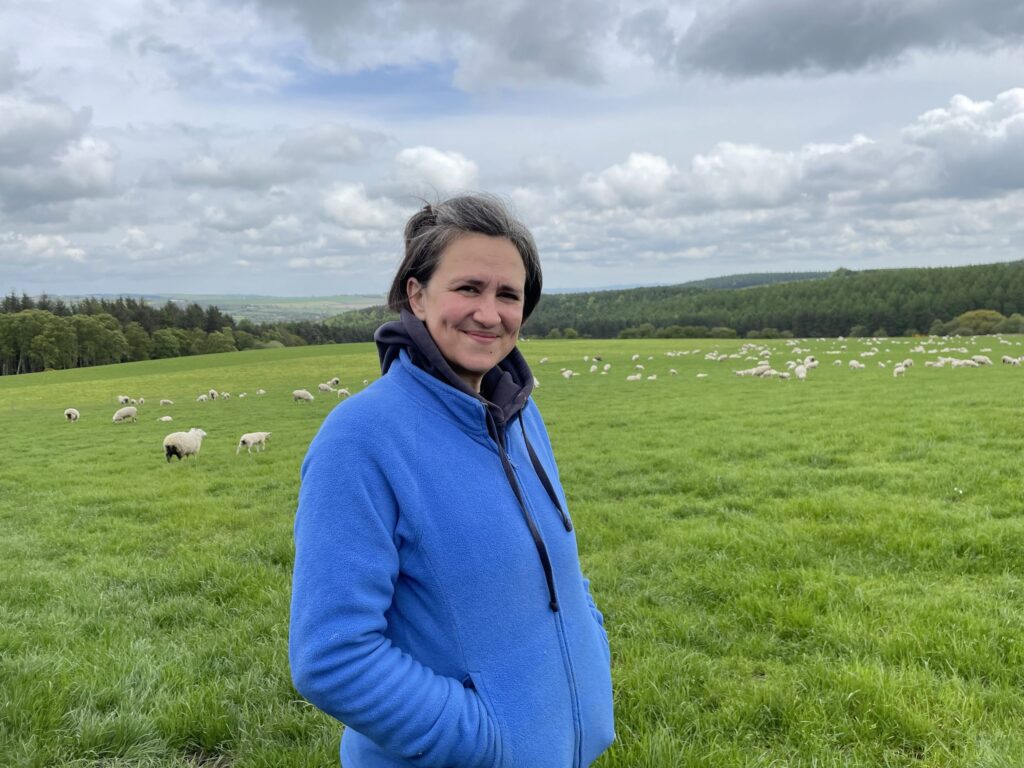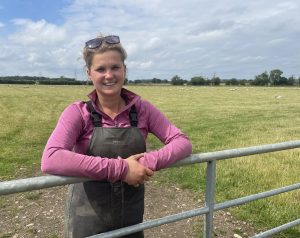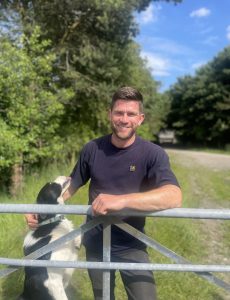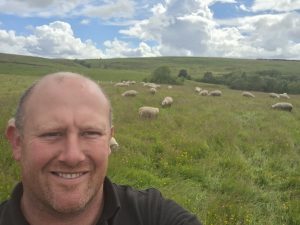Running a closed flock of efficient ewes on a forage based system
with kind permission of Emma Harle and Partners, Harle Farming, Durham
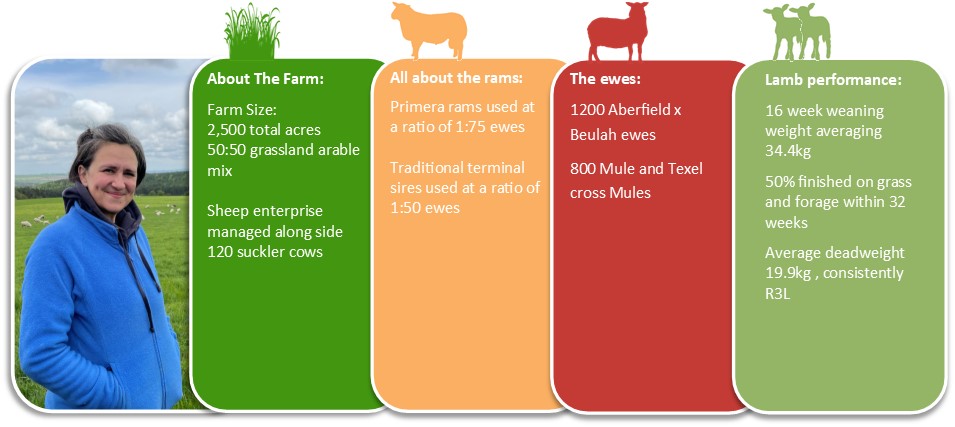
Emma Harle says the future of the family’s sheep enterprise is about maximising output from forage from an efficient ewe farmed in a sustainable and profitable mixed system, and she is well on the journey.
“We are focusing on what we can control, and that’s cost of production by making things more efficient,” she says. “We are in the process of swapping our traditional flock with Innovis bred ewes averaging 20% lighter mature body weight, rearing 10% more lambs which are reaching 20.5kg target finishing weight on average 60 days faster than five years ago.
“We have introduced a grassland reseeding policy which includes a herbal ley mix, together with brassicas, and we have just entered into Countryside Stewardship which we anticipate will lead in to ELM. By 2025, our goal is for one person to manage 1,000 ewes lambing outdoors,” she explains.
“My family takes pride in breeding quality stock and crops. Within the sheep enterprise we had farmed a traditional nucleus Mule flock for many years, breeding our own replacements until leaving a tenanted farm in Northumberland in 2012. We then had to buy in replacement Mules from elsewhere and began to realise that the Mule ewe was evolving and one of the biggest differences was an increase in size. We were becoming concerned about the direction of the breed. When I returned home to the farm I also started to look at the long-term profitability of our sheep enterprise; strip out the current level of support payments and the future of the business looked frightening.”
The Harles were annually purchasing their replacements in the mart, however 2016 was the tipping point when they not only bought in shearlings, but also Borders disease which hit them during lambing 2017. “Determined to not expose ourselves to disease again we started our research, we talked about closing the flock and farming a more efficient ewe that we could keep off grass. And that’s when Innovis came in to the frame; we found it was breeding sheep, specifically selected to produce off the cheapest form of feed – the green stuff.
“We initially invested in foundation Aberfield cross Beulah ewes from a high health flock, they are currently being bred up to three quarter Aberfield status and we have replaced some of our traditional terminal sires with the Primera.
“Lambing the Aberfield crosses compared with the traditional flock is the difference between night and day, and we’re no longer clarting on; we’re found these ewes demonstrate real lambing ease, and have sufficient quality colostrum and demonstrate good maternal traits whilst their lambs show proper vigour to fight and get up and suck. Overall losses from scan to rearing have been drastically cut from 23% to 13%.
“Furthermore, just 30% of lambs were finished on concentrate in 2020 enabling us to reduce our concentrate bill by a third,” she says adding: “Farming lighter ewes means there is an opportunity to increase stocking rate by up to 30%. Furthermore, stocking a more efficient ewe will offer us more flexibility going forward – more sheep, more cattle, more arable or more environmental/regenerative initiatives? Who knows what’s around the corner, but we are preparing.
